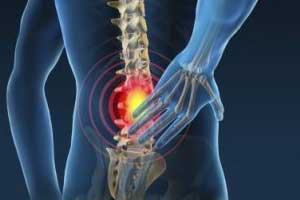- Home
- Editorial
- News
- Practice Guidelines
- Anesthesiology Guidelines
- Cancer Guidelines
- Cardiac Sciences Guidelines
- Critical Care Guidelines
- Dentistry Guidelines
- Dermatology Guidelines
- Diabetes and Endo Guidelines
- Diagnostics Guidelines
- ENT Guidelines
- Featured Practice Guidelines
- Gastroenterology Guidelines
- Geriatrics Guidelines
- Medicine Guidelines
- Nephrology Guidelines
- Neurosciences Guidelines
- Obs and Gynae Guidelines
- Ophthalmology Guidelines
- Orthopaedics Guidelines
- Paediatrics Guidelines
- Psychiatry Guidelines
- Pulmonology Guidelines
- Radiology Guidelines
- Surgery Guidelines
- Urology Guidelines
Young Golfers more prone to Lumbar Degeneration: Journal of Neurosurgery

Young golfers adopting the x-factor golfing shot, which is known as one of the preferred techniques may be more prone to Lumbar Degeneration, a new report has pointed out
In a recent review article, scientists have discussed how modern-day golf swing biomechanics lead to the development of repetitive traumatic discopathy (RTD) in young golfers. An X-factor shot is the most prefered choice of modern day golfer which may hit the ball faster and farther but prolonged practice can put extra strain on spine leading to back injuries. Repetitive traumatic discopathy (RTD) is commonly observed new generation golfers which results from years of degenerative 'hits' or strains on the spine resulting in early-onset breakdown, instability, and pain. The article was published in Journal of Neurosurgery: Spine by Dr. Corey T. Walker, Juan S. Uribe, and Randall W. Porter from Barrow Neurological Institute.
With more than 300 swings per golf-playing day, the golfer repeatedly experiences minor traumatic injuries to the spine, which over time can result in a pathogenic process that the authors have termed "repetitive traumatic discopathy" (RTD). The authors point out that "among professional and amateur golfers, back disorders remain the most common injury, comprising 55% and 35% of injuries in these groups, respectively." They also note that modern professional golfers are experiencing back problems at far younger ages than the general population. To explain this, they focus on how the golf swing of present-day professionals, such as Tiger Woods, differs from that employed by golf legends Jack Nicklaus and Ben Hogan.
As golf has evolved over the last two decades, the golf swing has become more powerful. To keep up, modern-era professional golf players participate in intensive strength-training sessions. And the techniques of the swing have also changed. During the downswing, a greater compressive force is directed toward the spinal disc and facet joints, and this affects these structures asymmetrically.
The authors elaborated the mechanism by putting an example of Woods' years of debilitating spine pain.
The authors added- Repetitive traumatic discopathy (RTD) results from years of degenerative 'hits' or strains on the spine resulting in early-onset breakdown, instability, and pain. We hope medical practitioners, and surgeons, in particular, will be able to diagnose and treat golfers with RTD in a specialized fashion going forward."
Journal Reference:
In a recent review article, scientists have discussed how modern-day golf swing biomechanics lead to the development of repetitive traumatic discopathy (RTD) in young golfers. An X-factor shot is the most prefered choice of modern day golfer which may hit the ball faster and farther but prolonged practice can put extra strain on spine leading to back injuries. Repetitive traumatic discopathy (RTD) is commonly observed new generation golfers which results from years of degenerative 'hits' or strains on the spine resulting in early-onset breakdown, instability, and pain. The article was published in Journal of Neurosurgery: Spine by Dr. Corey T. Walker, Juan S. Uribe, and Randall W. Porter from Barrow Neurological Institute.
With more than 300 swings per golf-playing day, the golfer repeatedly experiences minor traumatic injuries to the spine, which over time can result in a pathogenic process that the authors have termed "repetitive traumatic discopathy" (RTD). The authors point out that "among professional and amateur golfers, back disorders remain the most common injury, comprising 55% and 35% of injuries in these groups, respectively." They also note that modern professional golfers are experiencing back problems at far younger ages than the general population. To explain this, they focus on how the golf swing of present-day professionals, such as Tiger Woods, differs from that employed by golf legends Jack Nicklaus and Ben Hogan.
As golf has evolved over the last two decades, the golf swing has become more powerful. To keep up, modern-era professional golf players participate in intensive strength-training sessions. And the techniques of the swing have also changed. During the downswing, a greater compressive force is directed toward the spinal disc and facet joints, and this affects these structures asymmetrically.
The authors elaborated the mechanism by putting an example of Woods' years of debilitating spine pain.
The authors added- Repetitive traumatic discopathy (RTD) results from years of degenerative 'hits' or strains on the spine resulting in early-onset breakdown, instability, and pain. We hope medical practitioners, and surgeons, in particular, will be able to diagnose and treat golfers with RTD in a specialized fashion going forward."
Journal Reference:
- Walker CT, Uribe JS, Porter RW. Golf: a contact sport. Repetitive traumatic discopathy may be the driver of early lumbar degeneration in modern-era golfers. J Neurosurg Spine, 2019 DOI: 10.3171/2018.10.SPINE181113
bio-mechanics of golfcommongolfgolf injuryJournal of NeurosurgeryLumbar degenerationmodern-day golf swingNeurosurgeryRepetitive traumatic discopathyx-factor shot related injury
Next Story
NO DATA FOUND

Disclaimer: This site is primarily intended for healthcare professionals. Any content/information on this website does not replace the advice of medical and/or health professionals and should not be construed as medical/diagnostic advice/endorsement or prescription. Use of this site is subject to our terms of use, privacy policy, advertisement policy. © 2020 Minerva Medical Treatment Pvt Ltd